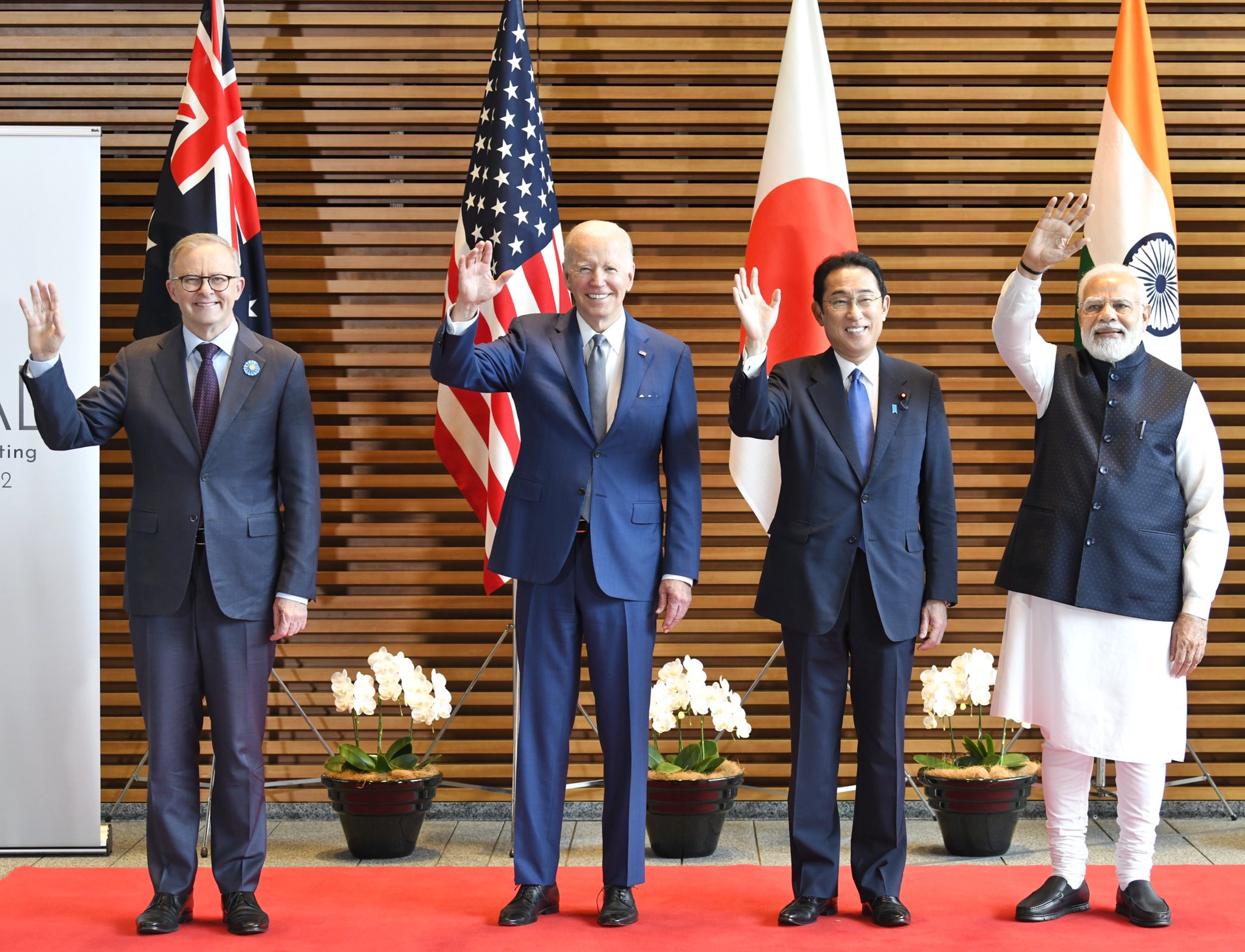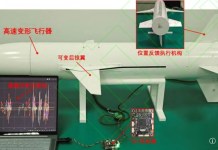“A week is a long time in politics” is a famous quote by the former British Prime Minister Harold Wilson. However, in international geopolitics, a week could also feel like an eternity. And a few months could feel like something from an alternate time frame.
It was none other than Donald Trump who revived the QUAD—an informal grouping of India, Japan, Australia, and the US—in 2017, during his first term.
Often touted as an Asian NATO to counterbalance China’s rising bellicosity in the Indo-Pacific, reviving the QUAD was frequently cited as a legacy of Trump’s first term. The idea was embraced by the Joe Biden administration, which elevated it to a summit level.
Trump’s second term began on a high note for the informal alliance. The US Secretary of State, Marco Rubio, hosted a meeting of Quad foreign ministers the very next day after Trump’s inauguration, in a clear signal of the new administration’s importance to the Indo-Pacific region.
This was followed by another Quad foreign ministers meeting in July.
However, since then, the grouping is staring at an uncertain future. Or at least the group has fallen off the Trump administration’s priority list.
Is Quad Dead?
India was to host the Quad summit in November this year. However, reports indicate that Trump is not inclined to attend the meeting, and the whole summit might be called off in his absence.
The Indo-US relationship is perhaps at its lowest point in the 21st century. In a series of deliberately planned, provocative steps, Trump welcomed Pakistani general Field Marshal Asim Munir to the White House in June, barely a month after the India-Pakistan War in May.
At 50%, Trump has imposed the highest tariffs on India in the world. And the two countries have still not been able to sign a trade deal.
It seems unlikely that the Indo-US bilateral relationship can stabilize without a trade deal and the reversal of the punitive tariffs imposed by the Trump administration on India.
And without the Indo-US relationship stabilizing, it is difficult to imagine how the Quad could realize its true potential.
Indeed, India and the US are the power centers and the two primary pillars of the alliance. India and the US are the biggest countries in the bloc in terms of population, economic size, or military power.
Of course, losing India would mean the Quad losing the world’s most populous country, the world’s fourth-largest economy, and the fourth strongest military power.
However, India brings much more to the Quad than just its size, economy, or military power.
In fact, the loss of India could be detrimental to the very idea of the Quad as a stabilizing force in the Indo-Pacific, which can counterbalance rising China.

Can the Philippines Replace India In The Quad?
Recent geopolitical developments suggest another dangerous thought taking hold: the US is trying to replace India with the Philippines in the Quad, or at least Washington might be sending New Delhi a subtle signal that it is not irreplaceable for the Indo-Pacific alliance.
Even as the planned Quad summit in India hangs in limbo, the US Secretary of War Pete Hegseth met with the Defense Ministers of Japan, Australia, and the Philippines in Kuala Lumpur on November 1.
Notably, this was Hegseth’s second such interaction with the Defense Ministers of these countries this year.
I met with my counterparts from Australia, Japan, and the Philippines for the second time this year to discuss increased deterrence and readiness in the South China Sea.
We share an ongoing commitment to ensure peace and stability in the region and are resolute in our… pic.twitter.com/VoFrDC7mvb
— Secretary of War Pete Hegseth (@SecWar) November 1, 2025
A joint statement issued by the leaders after the meeting covered many themes that had become standard in Quad press releases over the years.
“The Ministers and Secretaries reiterated their serious concern regarding China’s destabilizing actions in the East China Sea and the South China Sea, and their strong opposition to any unilateral attempts to change the status quo by force or coercion.”
“The defense leaders underscored the importance of upholding international law and freedom of navigation and overflight, as reflected in the United Nations Convention on the Law of the Sea, and reaffirmed that the 2016 South China Sea Arbitral Award is final and legally binding on the parties to the proceeding,” it said.
The statement added:
“The defense leaders voiced their shared determination to ensure peace and stability in the region with the following commitments:
- To reaffirm the focus of Australia, Japan, the Philippines, and the United States’ joint efforts on deterrence and operational readiness.
- To enhance coordinated defense cooperation activities.
Furthermore, the four countries decided to establish the framework for the Indo-Pacific Chiefs of Defense Cooperation Council. They also decided to hold joint military drills and welcomed “the upcoming BALIKATAN 2026 as the next exercise in the Philippines with participation from all four countries’ respective forces to enhance joint preparedness.”
It is true that these four countries have held meetings in the past as well. In fact, the November 1 meeting was the fifth such meeting between them in the last three years.
However, the focus on joint military drills and presenting a united front against China in the Indo-Pacific is hard to miss at a time when there is no clarity on the planned Quad summit in India.
However, replacing India with the Philippines will not be easy. And, as noted above, such a strategy will put at risk the US’s carefully built Indo-Pacific strategy during the last decade and a half.
From Asia-Pacific To Indo-Pacific
India brings to the Quad much more than its size, economy, population, or military power.
To truly appreciate India’s criticality to the Quad, we must go back a decade in time.
It was around 2013 that the US began transitioning from the “Asia-Pacific” framing to “Indo-Pacific” in official discourse.
This reflected growing recognition of India’s role and the Indian Ocean’s strategic importance amid China’s rise.
The new nomenclature, while recognizing India’s centrality in achieving a stable and free Indo-Pacific, also communicated to New Delhi that India is central to US strategy in this region.
It defined the entire region from the US West Coast to India’s East Coast as a unified space, highlighting India as an equal stakeholder in maintaining peace and stability in this crucial region.
This evolution underscored a geopolitical pivot: “Asia-Pacific” focused on Pacific-centric economics, while “Indo-Pacific” emphasized a broader, security-oriented lens incorporating the Indian Ocean to integrate India as a counterweight to China.
The shift gained momentum under the Obama administration. However, it was under the Trump administration in 2017 that the term was formally adopted as the cornerstone of U.S. regional strategy, replacing the Obama-era “Asia-Pacific rebalance” (also known as the “pivot to Asia”).
It is no coincidence that the term “Indo-Pacific” entered the official US lexicon in 2017, the same year the Trump administration also revived the Quad, which had been dormant since 2008.
It underscored that India is central to the US’ Indo-Pacific strategy and to the Quad as well. Without India, there can be no Indo-Pacific and no Quad, as we know it.
At the moment, the Trump administration’s “America First” policy has destabilized its relationship with India, which in turn has put the Quad on the back burner.
However, as Arzan Tarapore, a visiting fellow at the Hoover Institution at Stanford University, argues in his latest article for Foreign Policy, “The Quad Is Dead, Long Live The Quad” – in today’s volatile and uncertain atmosphere, the world needs more of Quad, not less, and India is absolutely critical for its success.
- Sumit Ahlawat has over a decade of experience in news media. He has worked with Press Trust of India, Times Now, Zee News, Economic Times, and Microsoft News. He holds a Master’s Degree in International Media and Modern History from the University of Sheffield, UK.
- VIEWS PERSONAL OF THE AUTHOR
- He can be reached at ahlawat.sumit85 (at) gmail.com




